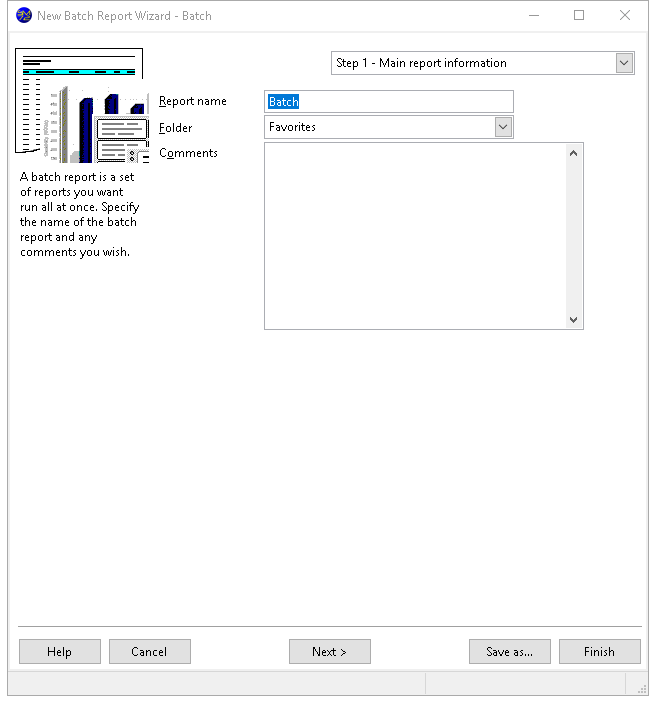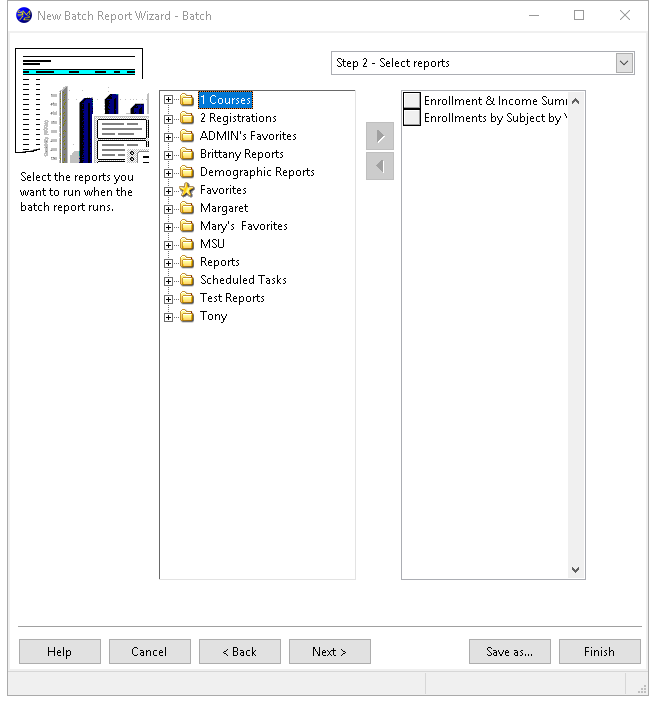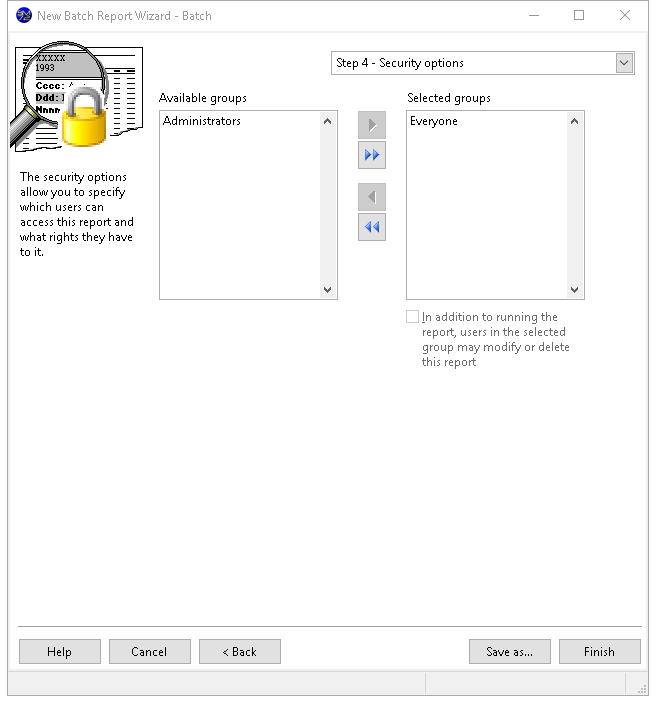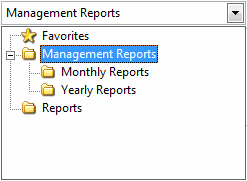Batch Report
Suppose you normally run the same three reports at the end of every week. It's kind of a pain to select each report one at a time, specify where to output it, and then run it. Instead, create a batch report that combines those three reports and just run it. It automatically runs the three reports, outputting each to the desired destination, such as printer, file, or email. You can even schedule batch reports.
When you run a batch report, it prompts you for all unique ask-at-runtime filter conditions for all reports at the start of the run and uses those values for the conditions in all reports. That way, you aren't asked more than once for the same value.
To create a batch report, follow the steps in the Creating a Report topic, and select the Batch report type.
Step 1 Main Report Information
The first step in this wizard is to enter the following information:

Report name: the name of the report. If you enter the name of an existing report, an error message displays. You can't use a backslash ("\") in a report name; the computer will beep if you press that key. You cannot go to the next step until you have entered a valid name.
Folder: the folder this report belongs in. The default is the current folder in the Reports Explorer. You can select the desired folder by clicking the down arrow beside the folder name and choosing the folder in the list that appears. To expand a folder, click the + sign in front of the folder name; the + sign changes to a - sign. To collapse a folder, click the - sign in front of the folder name; the - sign changes to a + sign. To select the desired folder, either click it and click the down arrow again to close the list or double-click it.
- Comments: any comments entered here appear in the Reports Explorer when the report is selected.
Step 2 Select Reports
Step 2, in which you select which reports run when the batch report runs, is shown below:

The options in this step are:
A list containing all reports that have not already been selected appears at the left. The reports are organized in the same folders they are in the Reports Explorer; click the + sign in front of a folder to expand it and see the list of reports it contains.
A list showing the reports included in the batch appears at the right. Reports in this list may be moved up and down to change the order in which they run; to do this, click the button in front of the report to move and drag the button up or down in the list.
Add: clicking this button adds the selected report in the available list to the selected list. You can also add the report by double-clicking it in the available list. The report is removed from the available list.
Remove: clicking this button removes the selected report from the selected list. You can also remove the report by double-clicking it in the selected list. The report is added to the available list (although you may not see it if the folder the report is from isn't expanded).
Step 3 Output Options
The options in Step 3 allow you to determine the output destination for each report in the batch.

The options in this step are:
A list containing the reports in the batch. Select a report to set its output options.
Output options. The default is to preview the report, but you can also choose to print the report or output it to a file or email. The options in this step are the same as they are in the Output page of the Reports Explorer.
Step 4 Security Options
The options in Step 4 allow you to determine who can access your report and what they can do with it.

The options in this step are:
Available groups: this shows which user groups do not have access to this report.
Selected groups: this shows which user groups have access to this report. By default, the Everyone group has access to a new report, so all users can see it. If you want only certain users to see it, remove the Everyone group from the Selected list and add the appropriate groups from the Available list. If no groups have access to the report, the report is essentially private, available only to you.
Add: clicking this button adds the selected group in the Available list to the Selected list. You can select several groups by holding down the CTRL key as you select them; clicking Add adds all selected groups to the Selected list. You can also add the group by double-clicking it in the Available list, selecting it and pressing ENTER, or dragging the group from the Available list to the Selected list. The group is removed from the Available list.
Add all: clicking this button adds all groups from the Available list to the Selected list.
Remove: clicking this button removes the selected group (or groups if you have selected more than one) from the Selected list. You can also remove the group by dragging it from the Selected list to the Available list. The group is added to the Available list.
Remove all: clicking this button removes all groups from the Selected list, and adds them to the Available list.
In addition to running the report, users in the selected group may modify or delete this report: turn this option on if the selected group in the Selected list can edit or delete this report; if this item is turned off, only you are able to do so.
